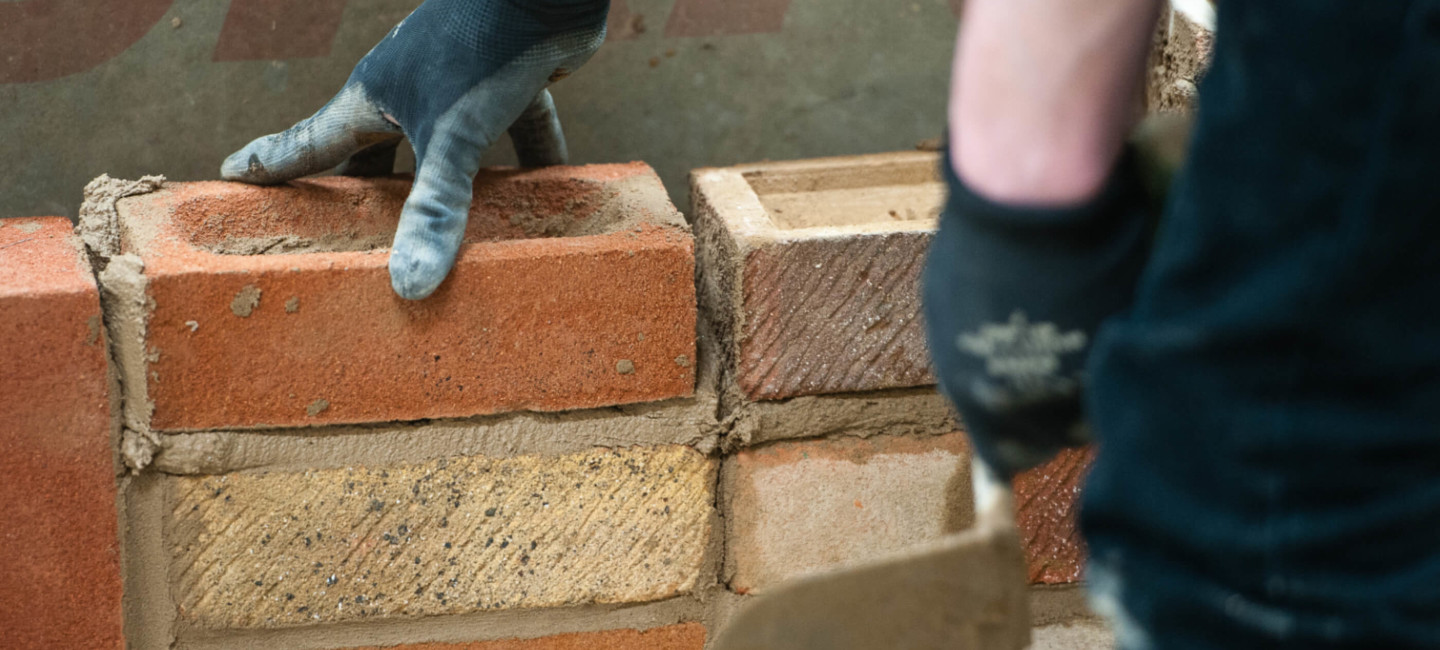An Unbiased View of Bricklayer Auckland
Wiki Article
Some Known Questions About Bricklayer Auckland.
Table of ContentsMore About Bricklayer AucklandThe Ultimate Guide To Bricklayer AucklandThe Basic Principles Of Bricklayer Auckland The Bricklayer Auckland Statements
The difference in between ZERO and classic stonework is in the laying of the brick. The block is no longer pushed vertically, however tilted. No has an unique opening on the upper side of the brick. Because of this the mortar bed is lower. It will certainly sink also much deeper when the next program of blocks is laid.Furthermore, we likewise paid focus to a good proportion between the length as well as size of the brick to make sure that it is ideal for dealing with a stretcher bond. By doing this the job proceeds swiftly. Benefit, For a specialist by doing this of functioning is rarely a challenge. He can work with the material/equipment that is familiar to him.
Bricklayers are a crucial career in the building and construction sector, responsible for laying bricks, pre-cut stone and cinder block in mortar. Bricklayers construct, expand and repair residential and commercial buildings, and other structures such as foundations, wall surfaces, chimneys or decorative stonework. Reaching completion of a job as well as having the ability to claim 'I constructed that' supplies a real sense of achievement for brickies.
Your time as a bricklaying apprentice will normally be split in between your employer and also training copyright (such as a college), with at the very least 20% of your typical working hours invested in training. Your training may take place every week, every month or in a different block of time, and it can occur at your place of job, at your training company or online.
4 Simple Techniques For Bricklayer Auckland
When investigating building, you inevitably discover that any kind of brand-new or innovative concept has in fact been tried over and also over once again, commonly stretching back years. Among these new-but-actually-old suggestions is the suggestion of a mechanical bricklayer, a machine to automate the construction of stonework walls. It's easy to see the charm of this concept - masonry building seems nearly completely matched for automation.It does not look like it would certainly require physically complicated movements - each brick obtains a layer of mortar used, and also is merely laid in place next to the previous one. And also due to the fact that each physical joint coincides size, positioning is nearly deterministic - each brick coincides fixed range from the previous one.
These makers could not notice anything concerning their setting, or procedure where a block needed to go - they merely squeezed out a layer of mortar as well as mechanically put a brick at normal intervals (Bricklayer Auckland). It's unclear just how numerous of these equipments ever before made it beyond the attracting board, however at the very least among these (John Knight's) was made use of to develop a block wall that allegedly still stands today.
Over the years, stonework has actually decreased in value as a building innovation in the established globe, as well as with it the rate of interest in automating it. Unlike with concrete 3D printing, where there are dozens of efforts to create the innovation, I can just find a handful of existing efforts to automate masonry. Bricklayer Auckland.
Some Known Details About Bricklayer Auckland
It can positioning blocks in limited hallways or intricate edges, as well as Hadrian can build all the walls of a tiny structure with just a few moves of the vehicle. Hadrian can presently establish around 200 obstructs a hr, but they're aiming to be able to do 1000 obstructs a click here to find out more hr or more (the blocks it sets are various from the block masonry Web Site used in the US, but in United States masons can establish somewhere in the area of 400 blocks a day).
SAM has a series of sensing units to make up for the movement of the system as well as ensure it's positioning blocks level, and also can work with bricks of all various sizes (though it will not develop CMU block wall surfaces). It gets placed to a movable scaffolding that's increased gradually as the wall surface is completed.
The marketing product on Construction Robotics' internet site recommends that it's no more their major focus - even more emphasis is provided to their other product, MULE.Other than SAM as well as Hadrian, there are a few other mechanical bricklayers in various stages of development. Craftsmac, a company out of India, simply lately revealed a robot mason used for developing CMU wall surfaces - it shows up rather similar to SAM, a wheeled framework with a robotic arm, conveyor, and mortar mixer placed to it.

6 Simple Techniques For Bricklayer Auckland
A slightly various classification of machines focused go to this web-site on enhancing masonry efficiency is what I'll call "masonry aides". These are makers developed to assist with literally lifting the block (they seem to be more common with block than brick) and also taking the stress off the mason, while still allowing the mason to adjust it into placement, Masonry aides date from a minimum of 1994, when the armed forces trying out MOTHER, the Mechatronically Assisted Mason's Aid.
Report this wiki page